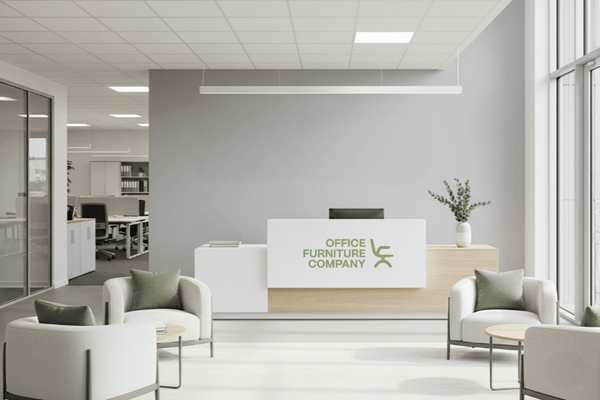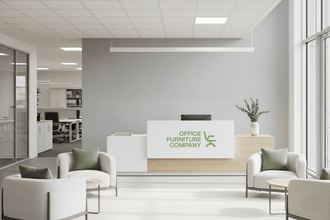
Agile and Inspired: The New Wave of Office Workstations and Desking Solutions
In today’s rapidly evolving work environment, employee wellbeing has become a critical focus for many organizations. As companies strive to create workspaces that make their teams feel valued and comfortable, the influence of office furniture design on productivity and creativity cannot be overstated. Modern office desking solutions are at the forefront of these changes, transforming how we think about and use our workspaces.
The Evolution of Office Spaces
Modern office spaces are no longer defined by rigid rows of identical desks. Instead, they are characterized by flexibility, adaptability, and a focus on catering to the diverse needs of employees. The traditional, desk-bound setup is being replaced by a variety of office workstations that support different working styles and preferences.
This shift is driven by the rise of cloud-based technologies and agile working methods, which have untethered employees from fixed locations. Today’s workers need the freedom to choose where and how they work within the office. To meet these needs, companies are providing a range of innovative workstations designed to foster both individual productivity and collaborative efforts.

Personalized Workspaces: A Place to Feel at Home
One of the most significant trends in office design is the move towards personalized workspaces. Office workstations that offer individual storage and flexible screens are becoming increasingly popular as they allow employees to establish personal boundaries and create a sense of ownership over their workspace.
Screens between desks serve a dual purpose. They facilitate social interaction and collaboration when desired, while also allowing workers to maintain privacy and focus when needed. This balance is crucial in supporting both teamwork and individual productivity.
Screens with built-in rails for hanging office accessories ensure that essential items, such as documents, organizational tools, and stationery, are always within easy reach. This not only enhances efficiency but also helps employees feel more organized and in control of their work environment.
Personal storage areas integrated into the workstation provide a convenient place for employees to keep their belongings secure and accessible. Lockable storage options add an extra layer of security, giving employees peace of mind when they step away for meetings or breaks.
The ability to personalize one’s workspace with keepsakes, photos, or other personal items is also an important consideration. Screens with tackable or magnetic surfaces allow employees to display these items, adding a personal touch to their work environment. This is especially valuable in shared or hot-desking scenarios, where maintaining a sense of individuality can be challenging.
Health-Conscious Environments: The Rise of Height-Adjustable Desks
Height-adjustable desks are revolutionizing the way we think about office desking. These versatile desks allow employees to shift between sitting and standing throughout the day, promoting a more dynamic and health-conscious work environment.
The benefits of height-adjustable desks extend beyond personal comfort. They support a healthier, more active lifestyle, which can lead to improved concentration, reduced fatigue, and overall better wellbeing. As a result, they are becoming increasingly popular among organizations committed to enhancing the health and productivity of their staff.
Height-adjustable options are not limited to individual workstations. Benches designed for multiple team members offer the same flexibility, allowing each person to adjust their height setting independently. This means that two people sharing the same bench can work in different postures, with one sitting and the other standing. This adaptability makes height-adjustable desks a versatile solution for a variety of office setups.

Ergonomics and Flexibility: The Role of Monitor Arms
Good ergonomics is essential for maintaining comfort and preventing injury in the workplace. Monitor arms play a crucial role in creating ergonomic workspaces by allowing users to adjust the height and angle of their computer screens.
These adjustable arms enable employees to find the perfect ergonomic position, reducing strain on the neck, back, and eyes. They are highly versatile and can be repositioned easily to accommodate different tasks. For example, screens can be shared with colleagues during collaborative work or adjusted back for focused, individual tasks.
The flexibility provided by monitor arms supports a more dynamic and adaptable work environment, where employees can quickly and easily adjust their workspace to suit their changing needs.

Collaborative Workstations: Bringing Teams Together
In the age of agile working, collaboration is more important than ever. Workspaces need to be designed to facilitate team interactions, allowing employees to come together to brainstorm, discuss, and solve problems.
Collaborative workstations are often equipped with lightweight, moveable, and modular furniture, making it easy to reconfigure the space as needed. This flexibility is essential for agile teams that need to adapt quickly to changing project requirements and team dynamics.
These workspaces are typically supported by a range of tools and technology that enhance collaboration. Whiteboards are invaluable for visualizing ideas and brainstorming, while large screens on easels can be used to display content to the entire team or support video conferencing for remote participants. These technological solutions ensure that everyone, whether in the office or working remotely, can contribute effectively to the discussion.
Acoustic panels and other elements help maintain privacy in these collaborative zones, allowing teams to work together without being disturbed by noise from the surrounding environment. This creates a focused, productive atmosphere that is conducive to effective teamwork.
Office boardroom tables are also evolving to support collaborative needs. These tables are designed to be multifunctional, accommodating both formal meetings and informal gatherings. Modern boardroom tables often feature integrated technology, such as built-in power outlets and video conferencing capabilities, to facilitate seamless communication and collaboration.

Creating Meaningful Workspaces
As technology continues to advance, enabling employees to work from virtually anywhere, the office must provide a compelling reason for people to come together. A well-designed workspace can offer a safe, comfortable, and engaging environment that encourages employees to gather and connect.
Furnishing the office with workstations that can be personalized for comfort and customized for inspiration is a key part of this strategy. When employees feel that their workspace reflects their individual needs and preferences, they are more likely to feel motivated and engaged.
Workstation solutions that support seamless transitions from individual tasks to collaborative activities, enhanced by innovative furniture and technology, can fuel passion and creativity. These dynamic environments not only meet the practical needs of employees but also inspire them to perform at their best.

Summary
Modern office desking and workstation trends are all about flexibility, personalization, and collaboration. Businesses need to provide solutions that adapt to the diverse needs of their workforce, offering a compelling and motivating reason for employees to be present and engaged.
From height-adjustable desks and monitor arms that promote good ergonomics to collaborative workstations and multifunctional office boardroom tables, the goal is to create a workspace that supports both individual productivity and collective creativity.
In this new era of work, the office is more than just a place to perform tasks; it is a space where people come together to connect, innovate, and thrive. By embracing these trends, businesses can create environments that not only meet the functional needs of their employees but also inspire them to reach new heights of productivity and success.


















